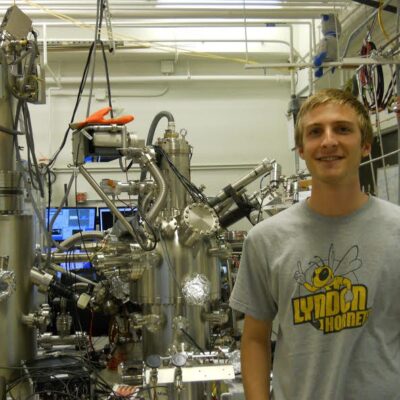Griffin Rodgers L&S Sciences
Surface Potential Mappings on TMD P-N Junctions
P-N junctions are the basis of most modern electronicsthe foundation for the diodes and transistors that make up our computers. Current research in low dimensional transition metal dichalcogenide (TMD) heterostructures aims to make these junctions smaller. TMD p-n junctions are made of atomically thin, stacked TMD layers and have been hailed for their novel properties, diverse applications, and potential to revolutionize electronics. My research project will provide improved understanding of the performance, functionality, and limits of atomically thin, stacked TMD p-n junctions. I will use Kelvin probe force microscopy (KPFM)a powerful variant of frequency modulated atomic force microscopyto map the surface potential of a nanoscale p-n junction, which will help determine the electronic properties of the junction.
Message To Sponsor
I would like to thank the SURF program and the Leadership Fund donors for giving me the opportunity to work on my research project full time this summer. I am passionate about physics and I am excited to develop my skills as a research scientist this summer. I hope that this program will help prepare me for my goal of a career in research science. I would also like to thank Professor Crommie and Hsin-Zon Tsai, my graduate student research mentor, for making my project possible.